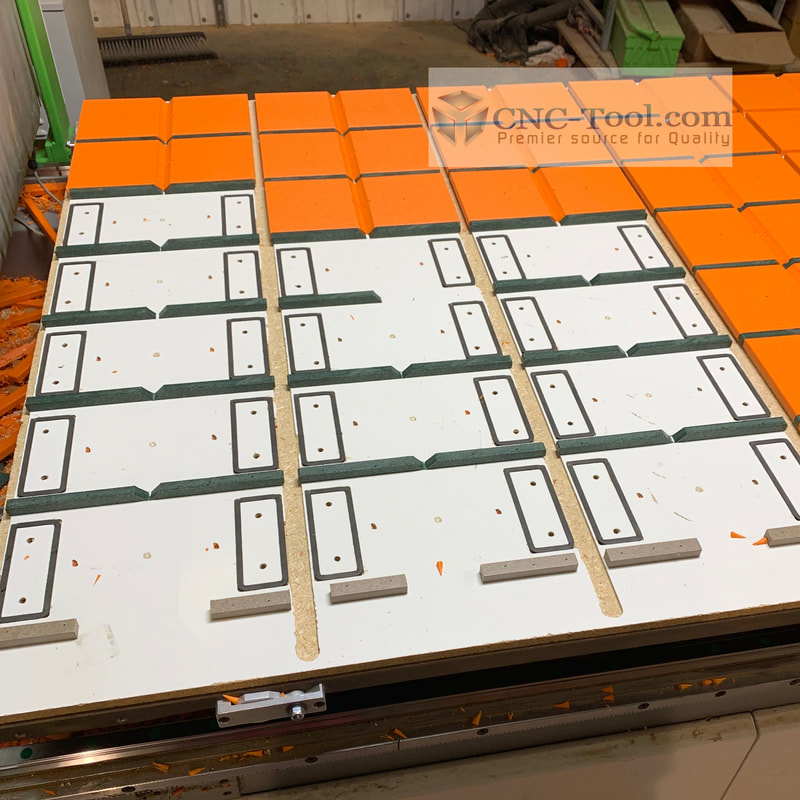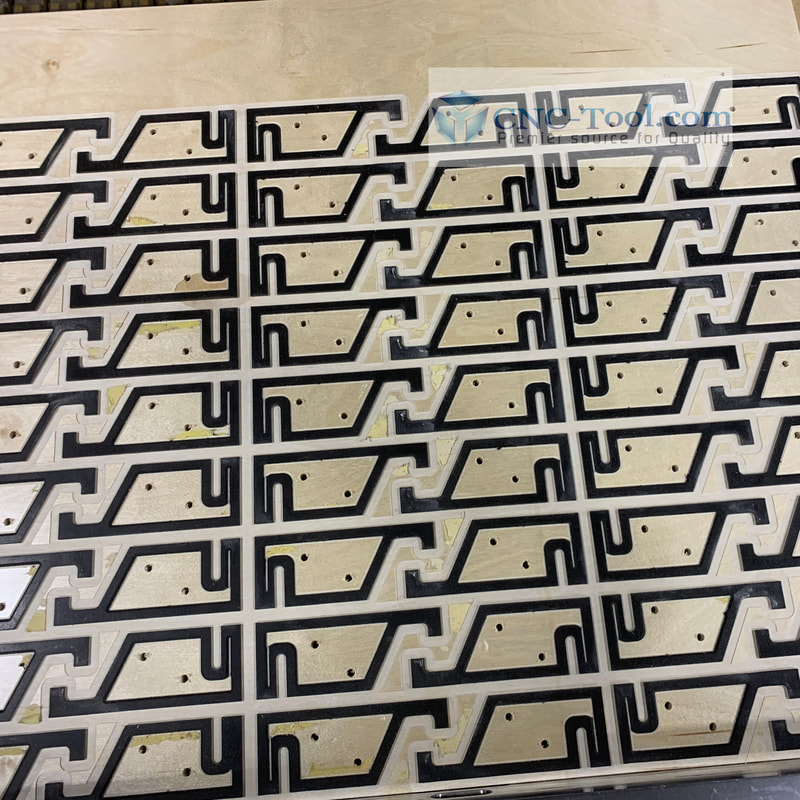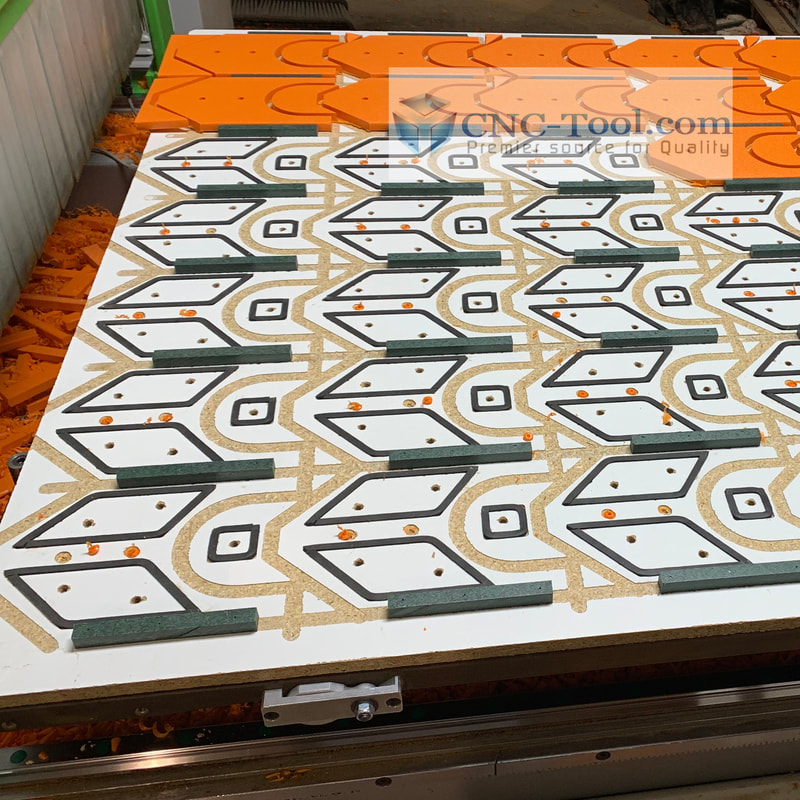In Board Gasket Applications

When routing repetitive parts, best solution may very well be to make a dedicated vacuum fixture. When using a non-porous fixture material, a vacuum source can be created for each piece, reducing vacuum loss. Using a non-porous fixture board also greatly reduces the vacuum loss that would occur through the sides and exposed tool paths of a porous board, like MDF. An adhesive backing keeps the gasketing material in the pre-routed channels.
In-Board Gasketing is intended for long-term use applications. We call these dedicated fixtures as opposed to spoil boards. In-Board Gasketing is longer lasting than surface mounted gasketing because it is recessed into the fixture. When the vacuum is engaged, the gasketing can only compress down the the height of the fixture. We recommend a 3-to-1 ration in terms of how much sticking above the fixture surface.
There are major benefits when it comes to In-Board Gasketing in a Dedicated Fixture:
In-Board Gasketing is intended for long-term use applications. We call these dedicated fixtures as opposed to spoil boards. In-Board Gasketing is longer lasting than surface mounted gasketing because it is recessed into the fixture. When the vacuum is engaged, the gasketing can only compress down the the height of the fixture. We recommend a 3-to-1 ration in terms of how much sticking above the fixture surface.
There are major benefits when it comes to In-Board Gasketing in a Dedicated Fixture:
- Because the gasketing is recessed by roughly 75%, it can only compress by the remaing 25% that remains above the fixture. This gives the gasketing (and dedicated fixture) extended lifetime.
- When the gasketing is pulled down into the channel, the part being routed is pulled flush against the fixture. This gives the part added rigidity when it is being routed.
- When the gasketing is pulled down into the channel, the part being routed is pulled flush against the fixture. This gives the part added rigidity when it is being routed.
- Make the fixture out of a non-porous material (Baltic Birch, HDPS, Melamine, etc..) so the fixture itself is not porous and leaking vacuum.
- If your material has excess warp/variance, a thicker gasket like CR 38 38 or CR 50 50 would allow for more material sticking above the surface if we stick to that 3-to-1 ratio
- CR 25 38 is the most common product ordered. Route this gasket channel 3/16″ deep and 3/8″ wide. It leaves 1/16″ exposed above the channel.
- Include a slight chamfer at the top of the gasketing channel so the gasketing does not pinch between the fixture and the part.
- After the vacuum source is created, a slight recess into the fixture is needed to allow for the creating of a vacuum pocket area.
- Vacuum source holes are needed to port the vacuum from the grid table below to not only each part, but also the waste pieces.
- If your material has excess warp/variance, a thicker gasket like CR 38 38 or CR 50 50 would allow for more material sticking above the surface if we stick to that 3-to-1 ratio








